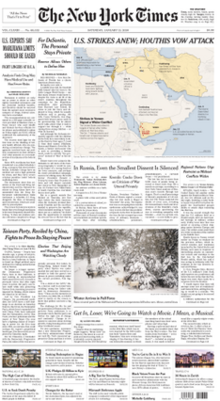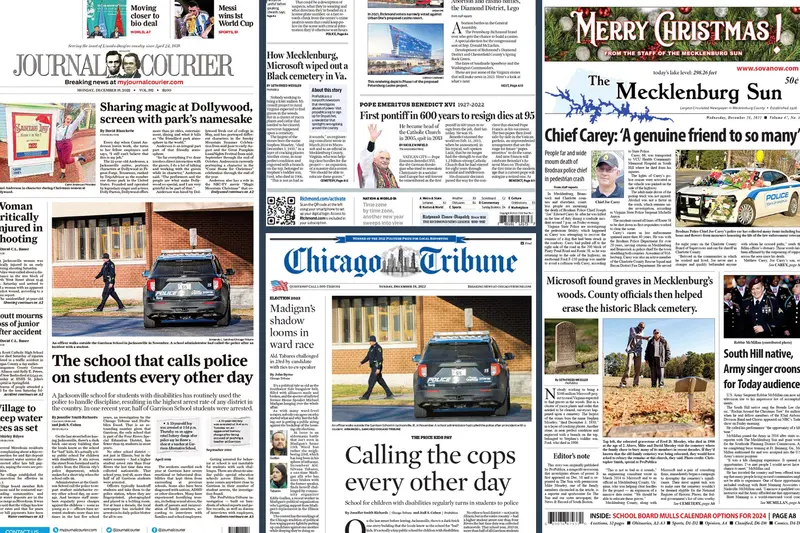4 Simple Techniques For News Articles
4 Simple Techniques For News Articles
Blog Article
The Only Guide for News Articles
Table of ContentsNews Articles Things To Know Before You Get ThisThe 10-Minute Rule for News ArticlesThe 15-Second Trick For News ArticlesUnknown Facts About News ArticlesNews Articles Can Be Fun For Everyone
Excellent expertise of various topics provides trainees an affordable edge over their peers. Despite the fact that electronic and social media sites are conveniently obtainable, we ought to not neglect how crucial it is to read the papers. Parents need to attempt and instill the routine of reading a newspaper as a day-to-day regimen to proceed the heritage of the revered print medium.Information tales likewise have a minimum of one of the adhering to essential features relative to the designated target market: closeness, prominence, timeliness, human rate of interest, peculiarity, or effect. The relevant term journalese is often made use of, usually pejoratively, to refer to news-style writing. Another is headlinese. Papers usually comply with an expository writing design.
Within these restrictions, information tales likewise aim to be thorough. Amongst the bigger and much more revered newspapers, justness and equilibrium is a major factor in offering details.
Newspapers with a global target market, for instance, tend to use an extra official design of writing. The certain options made by a news electrical outlet's editor or editorial board are typically gathered in a design guide; usual style guides include the and the US Information Style Publication. The primary goals of news writing can be summarized by the ABCs of journalism: precision, brevity, and clarity.
Some Known Details About News Articles
Generally, reporters will certainly not use a lengthy word when a brief one will do. They utilize subject-verb-object building and vibrant, active prose (see Grammar). They supply anecdotes, instances and allegories, and they rarely depend on generalizations or abstract concepts. News authors attempt to avoid utilizing the very same word greater than as soon as in a paragraph (occasionally called an "resemble" or "word mirror").
However, headlines in some cases omit the subject (e.g., "Leaps From Boat, Catches in Wheel") or verb (e.g., "Pet cat woman lucky"). A subhead (also subhed, sub-headline, subheading, subtitle, deck or dek) can be either a secondary title under the main headline, or the heading of a subsection of the article. It is a heading that comes before the main message, or a group of paragraphs of the primary message.

Additional signboards of any of these types may appear later on in the short article (specifically on subsequent web pages) to lure additional reading. Such signboards are likewise made use of as tips to the short article in other sections of the publication or website, or as ads for the item in other magazine or websites. Common structure with title, lead paragraph (recap in bold), various other paragraphs (details) and call info.

Example of a hard-lead paragraph NASA is recommending another space project. The spending plan demands roughly $10 billion for the job.
An "off-lead" is the 2nd most this article crucial front page news of the day. To "bury the lead" is to begin the short article with background information or information of additional relevance to the readers, forcing them to check out more deeply right into an article than they need to have to in order to discover the try here important factors.
The Buzz on News Articles
Common usage is that one or more sentences each form their own paragraph. Reporters generally explain the organization or structure of a newspaper article as an upside down pyramid. The important and most interesting elements of a tale are placed at the start, with supporting information following in order of lessening importance.
It permits individuals to explore a topic to only the deepness that their curiosity takes them, and without the charge of information or subtleties that they can consider irrelevant, however still making that info readily available to a lot more interested visitors. The upside down pyramid structure additionally allows short articles to be trimmed to any kind of arbitrary length throughout format, to suit the room available.
Some authors start their tales with the "1-2-3 lead", here are the findings yet there are many kinds of lead available. A twist can refer to numerous points: The last tale in the news program; a "delighted" story to end the show.
Longer short articles, such as magazine cover write-ups and the pieces that lead the inside areas of a paper, are understood as. Attribute stories differ from straight information in numerous means.
Excitement About News Articles
The journalist typically information interactions with interview topics, making the item much more individual. A feature's initial paragraphs typically relate an appealing moment or occasion, as in an "anecdotal lead". From the details of a person or episode, its sight quickly expands to generalities regarding the story's topic. The section that indicates what a function has to do with is called the or signboard.

The Editor's Toolbox: A Referral Overview for Beginners and Professionals (2001) Allan M. Siegal and William G. Connolly. The New York Times Manual of Style and Usage: The Official Design Guide Made Use Of by the Writers and Editors of the World's Many Authoritative Paper (2002) M. L. Stein, Susan Paterno, and R.
Report this page